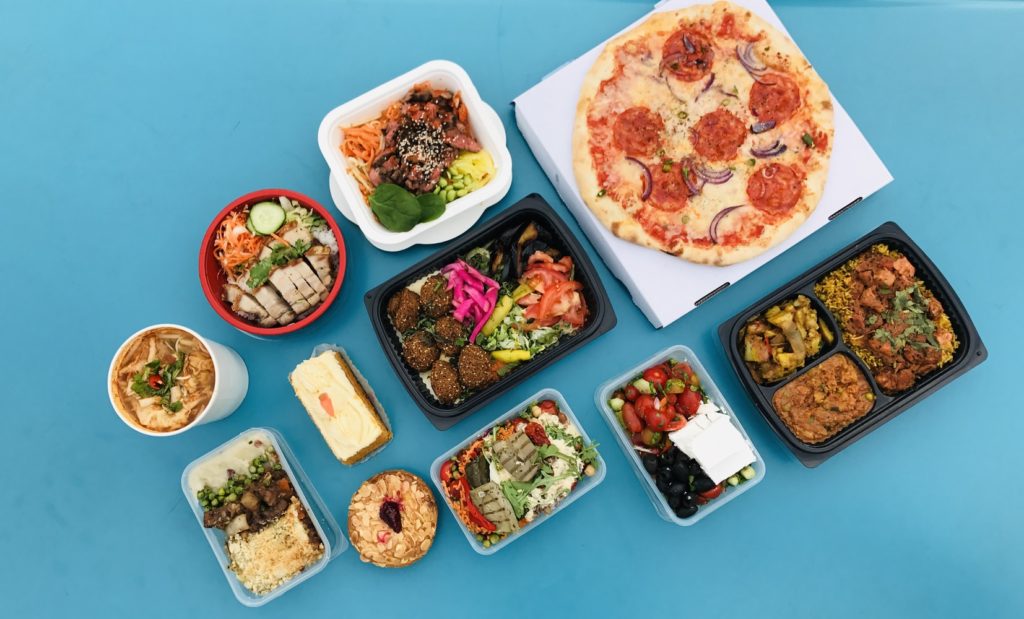Kim Yawitz, RD
A pretty smart guy named Benjamin Franklin once said, “If you fail to plan, you are planning to fail.” As a registered dietitian, I absolutely believe this logic applies when it comes to deciding what to eat. In this post, I hope to empower you to eat healthier by sharing my 5-step guide to meal planning for beginners.
You see, friend, spontaneity is NOT YOUR FRIEND when you’re hungry. Having a rock-solid dinner plan in place when you get home from work is often the difference between putting together a balanced meal and ordering out pizza (and garlic bread, and wings, and a two-liter for good measure). And unfortunately, lots of us flirt with danger. In fact, up to 85% of adults have no idea what’s for dinner just hours before mealtime.
The great news is, meal planning becomes second nature once you’ve done it a few times. Without further adieu, here are some suggestions for beginners.
Meal Planning for Beginners Step 1: Take an Inventory
If you want to know what’s for dinner, your first step should be to take an inventory of what you already have.
Start with your perishable items. Do you have veggies that are about to wilt, or chicken breast in the refrigerator that you need to either use or freeze? What about leftover cooked grains, like quinoa? That’s a great starting point!
You can build a meal (say, stir fry) by using up those perishables, or you can go to the pantry for further inspiration. Let’s say you have a few cans of white beans and some green chilies–what about a white chicken chili?
Starting with what you have keeps your fridge and pantry tidy, helps reduce food waste, and saves you money!
Meal Planning for Beginners Step 2: Pull Some Recipes
Now that you have a general idea of what’s in your kitchen already, you get to do the fun part–look for recipes!
Where you find those recipes is entirely up to you. You can search online, using keywords like “healthy recipes chicken onion white beans”). Alternatively, you can scour cookbooks or ask your friends for recommendations.
How many recipes do you need? That’s up to you, but I typically pull 5. We eat one dinner out per week, and I like to cook up a double batch of at least one meal to serve as leftovers.
Also, don’t forget sides! Click here to download our free meal planner, and here for some healthy protein, fat, carb, and veggie ideas.
If you’re feeling a bit stuck, you might try working off of a cycle menu based on themes (for example, Meatball Mondays, Taco Tuesdays, Soup’s On Saturdays…).
Whenever possible, I also recommend planning a double batch of freezer-friendly meals like soups, stew, and chilis. This might cost you a few extra minutes now, but it saves you loads of time down the road.
Meal Planning for Beginners Step 3: Back to the Kitchen
Once you have a general sense of what’s for dinner, you’ll need to go back to the kitchen to make your list.
Bring your recipes with you–you’re going to need them!
I make my list either on the computer or with pencil (so I can erase). I start by dividing my paper into sections of the grocery, such as produce, meat, deli, dairy, canned/boxed/, frozen. From there, I work through one recipe at a time, adding any items that I don’t already have at home.
The eraser comes in handy when the same ingredient appears in multiple recipes. Let’s say I need one onion for recipe 1, 0.5 onions for recipe 3, and 2 onions for recipe 5. I simply keep erasing and updating the number until I hit 3.5 onions.
(Pro tip: I sometimes even start my next list at the same time. In this case, I know I’ll have 1/2 onion left over. I can go ahead and add that to next week’s inventory.)
Like Santa, I like to check my list twice once I make it. There’s nothing worse than getting 10 minutes into dinner prep and realizing you’ve forgotten something important. For this reason, I like to print out my online recipes and mark the ingredients off as I go (you can throw them in a reusable sleeve and use a dry erase marker to save paper).
Meal Planning for Beginners Step 4: Shop
The fourth step to meal planning is to hit the stores (or the Instacart/Shipt/Prime)!
Two important things to remember: Don’t go hungry, and don’t forget your list. Both of these behaviors make you much more likely to end up with lots of delicious but nutritionally void foods in your cart.
Meal Planning for Beginners Bonus Step: Do Some
Early Prep
Do you have a bit of spare time after shopping? Put some in the bank for later!
Double check your recpies. and then take just a few minutes to chop up and store veggies that keep well, precook any grains for the week, etc. I like to store my prepped items in containers with a little piece of washi tape on top, which I label with food name, recipe name, and date.
So hopefully I’ve given you enough information to empower you to cook healthy meals at home using my 5-step guide to meal prep for beginners. But if you need a bit more help, I’ve got your back! Click here to schedule a free 15-minute nutrition consult.

